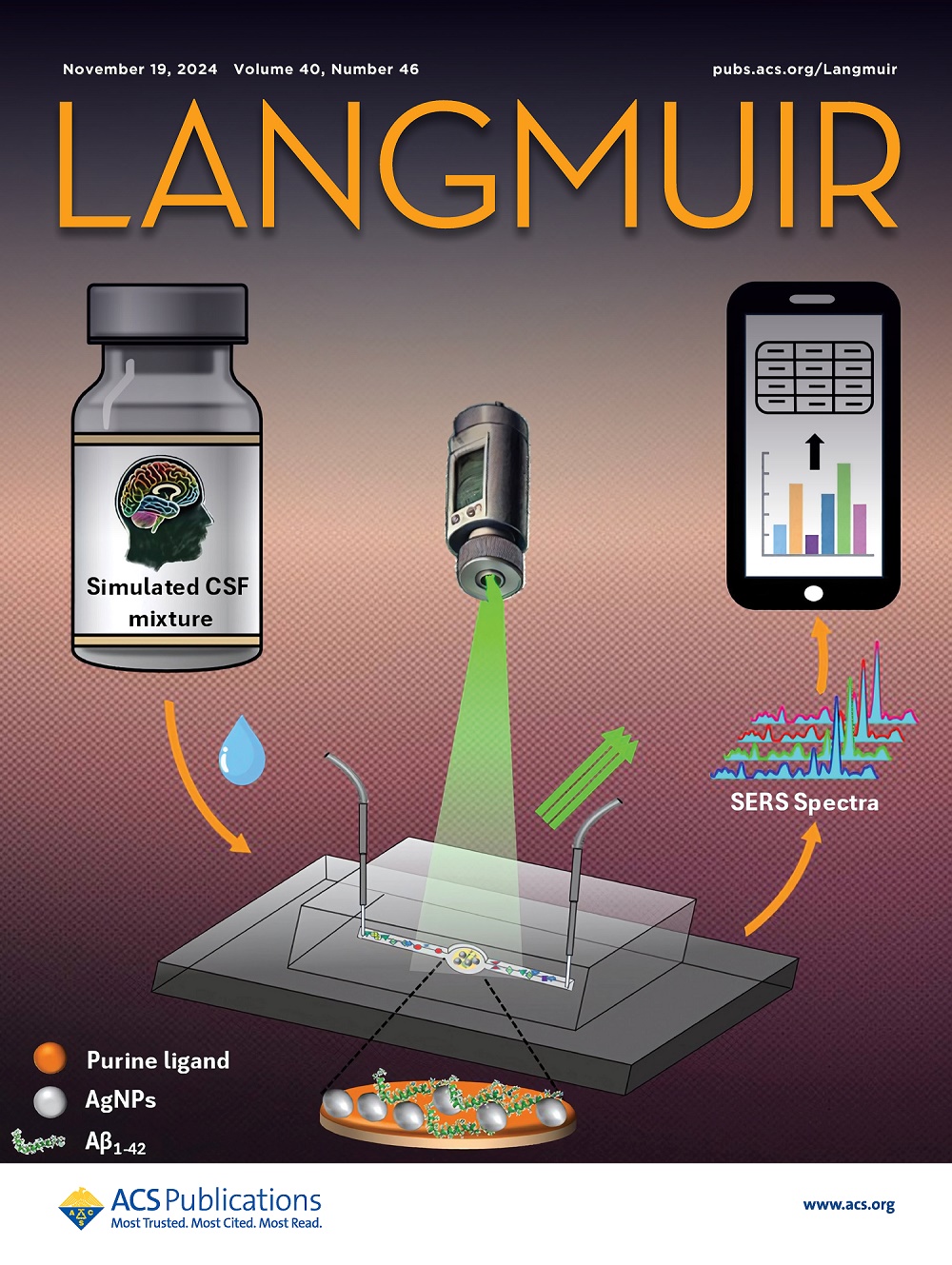Fabrication and Characterization of Bimetallic Silica-Based and 3D-Printed Active Colloidal Cubes
IF 3.7
2区 化学
Q2 CHEMISTRY, MULTIDISCIPLINARY
引用次数: 0
Abstract
Simulations on self-propelling active cubes reveal interesting behaviors at both the individual and the collective level, emphasizing the importance of developing experimental analogues that allow testing these theoretical predictions. The majority of experimental realizations of active colloidal cubes rely on light actuation and/or magnetic fields to have a persistent active mechanism and lack material versatility. Here, we propose a system of active bimetallic cubes whose propulsion mechanism is based on a catalytic reaction and study their behavior. We realize such a system from synthetic silica cuboids and 3D-printed microcubes, followed by the deposition of gold and platinum layers on their surface. We characterize the colloids’ dynamics for different thicknesses of the gold layer at low and high hydrogen peroxide concentrations. We show that the thickness of the base gold layer has only a minor effect on the self-propulsion speed and, in addition, induces a gravitational torque during sedimentation. For low activity, this gravitational torque orients the particles such that their velocity director is pointing out of the plane, thus effectively suppressing propulsion. We find that a higher active force can remedy the effects of torque, resulting in all possible particle orientations, including one with the metal cap on the side, which is favorable for in-plane propulsion. Finally, we use 3D printing to compare our results to cubes made from a different material, size, and roundness and demonstrate that the speed scaling with increasing particle size originates from the size-dependent drag. Our experiments extend the fabrication of active cubes to different materials and propulsion mechanisms and highlight that the design of active particles with anisotropic shapes requires consideration of the interplay between shape and activity to achieve favorable sedimentation and efficient in-plane propulsion.

双金属二氧化硅基和3d打印活性胶体立方体的制备和表征
对自推进活动立方体的模拟揭示了个体和集体层面的有趣行为,强调了开发实验模拟物以测试这些理论预测的重要性。大多数实验实现的活性胶体立方体依赖于光驱动和/或磁场,具有持久的活性机制,缺乏材料的通用性。本文提出了一种基于催化反应推进机理的活性双金属立方体体系,并对其行为进行了研究。我们通过合成硅长方体和3d打印微立方体实现了这样一个系统,然后在它们的表面沉积金和铂层。我们描述了在低过氧化氢浓度和高过氧化氢浓度下不同厚度金层的胶体动力学。我们发现,基底金层的厚度对自推进速度只有很小的影响,此外,在沉降过程中还会产生重力扭矩。对于低活动,这个重力力矩使粒子定向,使它们的速度指针指向平面外,从而有效地抑制推进力。我们发现,较高的主动力可以弥补扭矩的影响,导致所有可能的粒子方向,包括侧面有金属帽的粒子方向,这有利于平面内推进。最后,我们使用3D打印将我们的结果与由不同材料,尺寸和圆度制成的立方体进行比较,并证明随着粒径增加的速度缩放源于尺寸相关的阻力。我们的实验将活性立方体的制造扩展到不同的材料和推进机制,并强调了具有各向异性形状的活性颗粒的设计需要考虑形状和活性之间的相互作用,以实现有利的沉降和有效的面内推进。
本文章由计算机程序翻译,如有差异,请以英文原文为准。
求助全文
约1分钟内获得全文
求助全文
来源期刊

Langmuir
化学-材料科学:综合
CiteScore
6.50
自引率
10.30%
发文量
1464
审稿时长
2.1 months
期刊介绍:
Langmuir is an interdisciplinary journal publishing articles in the following subject categories:
Colloids: surfactants and self-assembly, dispersions, emulsions, foams
Interfaces: adsorption, reactions, films, forces
Biological Interfaces: biocolloids, biomolecular and biomimetic materials
Materials: nano- and mesostructured materials, polymers, gels, liquid crystals
Electrochemistry: interfacial charge transfer, charge transport, electrocatalysis, electrokinetic phenomena, bioelectrochemistry
Devices and Applications: sensors, fluidics, patterning, catalysis, photonic crystals
However, when high-impact, original work is submitted that does not fit within the above categories, decisions to accept or decline such papers will be based on one criteria: What Would Irving Do?
Langmuir ranks #2 in citations out of 136 journals in the category of Physical Chemistry with 113,157 total citations. The journal received an Impact Factor of 4.384*.
This journal is also indexed in the categories of Materials Science (ranked #1) and Multidisciplinary Chemistry (ranked #5).
 求助内容:
求助内容: 应助结果提醒方式:
应助结果提醒方式:


